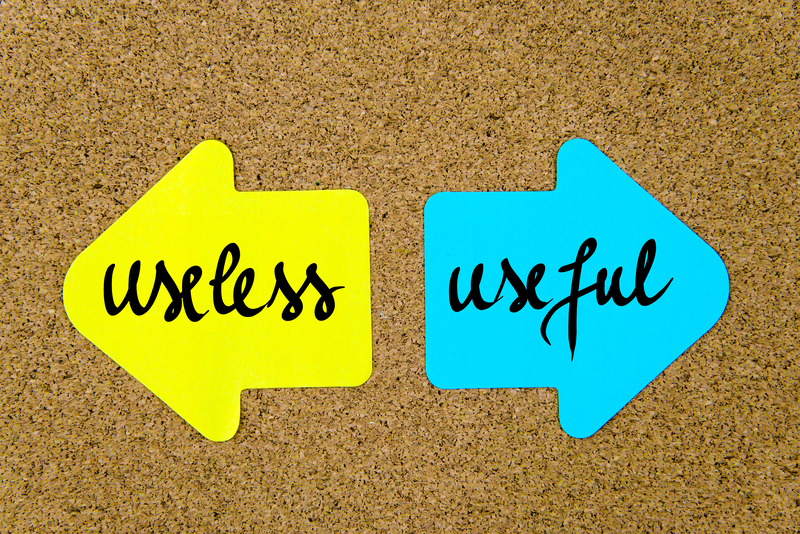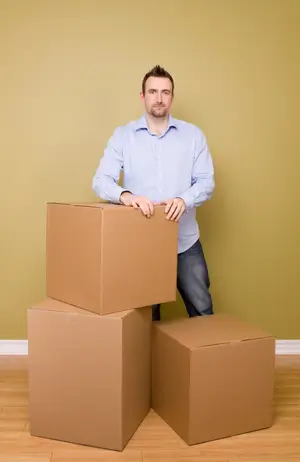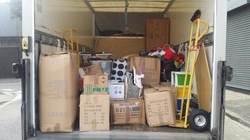How to Avoid Common Pitfalls When Moving a Piano
Moving a piano is no simple undertaking. These majestic instruments, with their intricate mechanics and considerable weight, demand careful planning and expert handling. Whether you own a grand piano or an upright, relocating it requires a distinct approach to ensure both your instrument and your home remain unharmed. To help with your piano moving journey, we have compiled a comprehensive and SEO-optimized guide to avoid common pitfalls when moving a piano. Let's explore the key considerations and steps for a successful piano move.

Understanding the Complexities of Piano Moving
Pianos are more than just furniture--they are delicate musical machines. Even minor mishandling can lead to costly repairs or complete irreparability. Below, we'll delve into why moving a piano is different from moving other household items and what mistakes to avoid in the process.
What Makes Pianos Difficult to Move?
- Weight and Size: Pianos can weigh anywhere from 300 to over 1,200 pounds, making them unwieldy and hazardous to move without proper care.
- Delicate Components: The internal components, such as strings, hammers, and keys, are sensitive to jostling and environmental changes.
- Unbalanced Shape: Their uneven weight distribution increases the risk of tipping or damage during transport.
- Susceptibility to Climate: Rapid humidity or temperature changes can impact a piano's wood, finish, and tuning.
1. Not Hiring Professional Piano Movers
One of the most common mistakes people make is attempting a DIY piano move. While it's natural to consider saving money, enlisting professional piano movers is crucial for several reasons:
- Expertise: Piano moving specialists understand the instrument's mechanics and how to protect them during transit.
- Proper Equipment: Professionals use piano dollies, straps, and padding tailored for these instruments.
- Insurance: In case of accidental damage, professional movers typically provide adequate insurance coverage.
Tip: Always research and hire reputable piano moving services with positive reviews and experience in handling various piano types.
Preparation: Key Steps Before You Move
2. Failing to Prepare the Piano Properly
Avoiding damage starts long before moving day. Here's how to prepare your piano effectively:
- Close and Lock the Lid: Secures the keys from movement and prevents internal damage.
- Wrap the Entire Instrument: Use moving blankets and padding around all sides. Secure with stretch wrap and tape to guard the finish from scratches.
- Remove Removable Parts: For grand pianos, detach the legs, lyre (pedal assembly), and music rack. Uprights may allow you to remove castors or pedals.
Label all hardware and package them safely to avoid losing vital components.
3. Measuring Spaces Incorrectly
It's easy to underestimate the size of doors, hallways, and stairs when moving large items. Not measuring properly can result in costly delays or damage to both the piano and your home.
- Measure all exits, entrances, stairwells, and tight turns along your piano's path.
- Ensure your new location has a space that fits the piano's dimensions and allows for safe maneuvering.
Double-checking these details avoids unnecessary complications and streamlines the piano moving process.
Avoiding Damage During the Move
4. Mishandling or Lifting Improperly
The most destructive mistake is improper lifting technique. Pianos can easily tip, leading to major injury or permanent instrument damage. To avoid mishandling when moving a piano:
- Always lift from the base, not by the legs or pedals, which can easily snap.
- Use a team of at least three to five people on each side for balance and support.
- Position hands evenly across the piano's body for stability.
- Move slowly and coordinate each step with your team.
Important: Never attempt to slide or drag the piano across floors without a dolly. This can damage your instrument and your flooring.
5. Ignoring Safety Equipment and Tools
Using household items as makeshift moving tools is a classic error that can result in accidents. Instead, equip yourself (or your movers) with the following:
- Piano Dolly or Skid Board: Specially designed for distributing weight evenly and moving smoothly.
- Moving Straps: Essential for securing the piano during lifting and transportation.
- Non-slip Gloves: Give you a firm grip to avoid dropping the piano.
- Ramps: Make negotiating stairs or thresholds much safer.
- Protective Blankets and Pads: Prevent nicks, scratches, and minor bumps.
Proper equipment is not only safer but also makes the task far more manageable.
6. Not Protecting the Floors and Walls
Pianos are heavy enough to dent floors, scratch walls, and damage corners if not handled with care.
- Utilize furniture sliders or thick blankets under the piano when crossing floors.
- Cover door frames and tight hallways with foam or towels to cushion any accidental bumps.
- Consider a spotter at tight turns and stairwells to guide the piano and watch for obstacles.
Transporting the Piano Safely
7. Skipping Proper Loading in the Moving Truck
Improper placement inside a vehicle can spell disaster for your piano. Avoid this pitfall by following these tips:
- Secure Upright: Place the piano with the backboard against the wall of the truck to maximize stability.
- Block Movement: Use sturdy blocks or wedges to prevent shifting during transit.
- Tie Down: Use ratchet straps to tightly secure the piano from several angles.
- Maintain Level: Never lay a piano on its side or back for an extended period, as this can cause internal damage.
Bonus Tip: Drive carefully, avoiding harsh braking or sharp turns to minimize jostling.
8. Neglecting Insurance Coverage
Even the best-laid plans can go awry, making insurance coverage a key aspect of a worry-free piano move. Here's what to consider:
- Check homeowner's or renter's policy for coverage of high-value items during transit.
- Verify insurance specifics with your chosen piano moving company.
- For particularly valuable or antique pianos, consider acquiring supplemental insurance for the move.
Peace of mind is invaluable when it comes to protecting your investment.
After the Move: Ensuring Your Piano's Condition
9. Improper Reassembly and Setup
Once your piano arrives at its new location, there's more to be done. Avoid hasty reassembly and ensure your instrument is set up correctly and safely:
- Follow manufacturer instructions for attaching legs and pedals.
- Have a professional handle assembly for grand pianos or complex models.
- Choose a suitable location--avoid direct sunlight, heating vents, and exterior walls, all of which can harm your piano's wood and tuning stability.
Allow your piano to acclimate to its new environment before tuning--a process which may take a few weeks.
10. Forgetting Post-Move Tuning and Maintenance
Pianos require delicate tuning after any significant move. Variations in humidity, handling, and temperature can all affect pitch and sound quality.
- Schedule a professional tuning 3-4 weeks after your move to allow your piano to settle.
- Inspect for any cosmetic or mechanical damage caused during the move and address minor issues promptly.
- Maintain a stable humidity of 40-50% around your piano to prolong its life and maintain optimal sound.
Special Considerations for Grand and Baby Grand Pianos
Moving a grand or baby grand piano is vastly different from relocating uprights. Grand pianos are especially vulnerable to leg, pedal, and lid damage if not carefully disassembled and cushioned. Here's what to keep in mind:
- Always remove the legs and lyre before moving a grand piano.
- Transport the instrument on its side, using a piano board specifically made for grands.
- Secure all parts and label them clearly for reassembly.
- If possible, hire expert grand piano movers with experience and a proven track record.
These precautions can mean the difference between a pristine relocation and a disastrous one.

Frequently Asked Questions About Piano Moving
How expensive is it to move a piano?
The cost to move a piano varies based on factors like distance, piano type, obstacles (stairs, tight spaces), and mover expertise. In general, expect to pay between $100 and $1,000 or more, especially for grand pianos or cross-country relocations.
Is it worth moving a piano myself?
While some people move uprights on ground floors with several strong helpers, moving a piano yourself is not recommended. The risk to your instrument, property, and personal safety often outweighs any cost savings.
How long does it take to move a piano?
A well-prepared upright piano move across a short distance may take 1-2 hours. Grand pianos or moves with greater complexity (stairs, elevators, long distances) can take significantly longer. Plan extra time for careful disassembly, transit, and reassembly.
Conclusion: A Successful Piano Move Starts With Preparation
In summary, avoiding common pitfalls when moving a piano requires thorough preparation, the right equipment, a reliable team, and an understanding of the unique challenges these instruments pose. Remember:
- Invest in professional piano movers for safety and peace of mind.
- Prepare and measure thoroughly before move day.
- Use proper safety equipment and take all necessary precautions to protect your piano, your property, and yourself.
- Attend to post-move tuning and maintenance to keep your piano sounding its best.
With the right steps, you can ensure your beloved piano endures the move unscathed and continues making music in your new home for years to come.
For further guidance or to schedule an expert piano move, contact your local piano moving professionals today.


